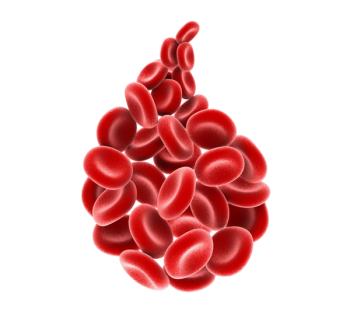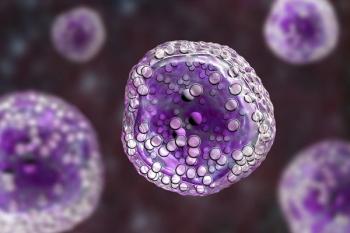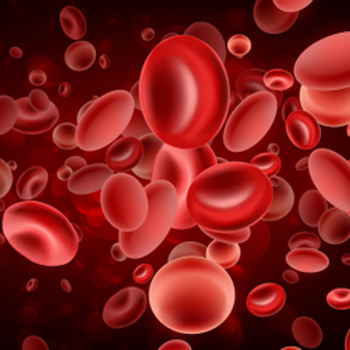
IMRT Does Not Improve Tolerability vs 3D-CRT in Advanced Rectal Cancer
Intensity-modulated radiotherapy increased some lower-grade toxicities vs 3D conformal radiotherapy in patients with locally advanced rectal cancer.
Intensity-modulated radiotherapy (IMRT) did not lessen radiation-related toxicity compared with 3-dimensional conformal radiotherapy (3D-CRT) after total neoadjuvant treatment or CRT, according to results from the phase 3 RAPIDO trial (NCT01558921) published in the International Journal of Radiation Oncology, Biology, and Physics.
In the total neoadjuvant treatment arm—which consisted of short-form radiation therapy followed by consolidation chemotherapy—83% of patients who received IMRT and 63% of patients who received 3D-CRT experienced acute fatigue of grade 1 or higher (OR, 2.71; 95% CI, 1.60-4.60; P < .001); 68% vs 53%, respectively, experienced acute nausea or vomiting of grade 1 or higher (OR, 1.79; 95% CI, 1.15-2.79; P = .010).
Of the other acute toxicities of grade 1 or higher end points, none differed based on radiation techniques; grade 1 or higher acute toxicities occurred in 98% of the IMRT group and 95% of the 3D-CRT group. Grade 3 or higher toxicities did not differ between radiation techniques for any acute end point; 28% and 31% of patients, respectively, experienced any acute toxicity of grade 3 or higher. Adherence to preoperative chemotherapy was 85% with IMRT and 84% with 3D-CRT.
In the CRT arm, 99% of patients in the IMRT group and 91% of patients in the 3D-CRT group experienced any acute toxicity of grade 1 or higher; 15% and 18%, respectively, experienced an acute toxicity of grade 3 or higher.
After treatment, 58% of patients with IMRT and 36% with 3D-CRT experienced any late toxicity (OR, 2.14; 95% CI, 1.28-3.57; P = .004); 29% vs 13%, respectively, experienced late sexual toxicity (OR, 2.31; 95% CI, 1.24-4.29; P = .008). None of the other late toxicity of grade 1 or higher or grade 3 or higher end points differed based on radiation technique. There were no differences in persistent toxicities of grade 1 or higher between radiation techniques, and no patients had persistent toxicities of grade 3 or higher.
In the 3D-CRT group, 4 patients had potentially radiation-related adverse events of grade 3; 1 case of preoperative neutropenic sepsis led to death, and 3 cases of ileus led to death. Additionally, adherence to preoperative CRT was 92% with IMRT and 93% with 3D-CRT, and adherence to postoperative chemotherapy was 19% vs 24%.
“We found that IMRT/[volumetric modulated arc therapy] did not result in less acute or late radiation-related toxicity compared with 3D-CRT. In contrast, after IMRT in the [total neoadjuvant treatment] arm, more acute fatigue and acute nausea/vomiting [of grade 1 or higher] were observed,” wrote senior study author Alice M. Couwenberg, MD, PhD, of the Department of Radiation Oncology at the Netherlands Cancer Institute in Amsterdam. “Contrary to our hypothesis, no benefit of IMRT was observed in terms of toxicity outcomes.”
The trial enrolled patients with locally advanced rectal cancer and 1 or more high-risk factors for locoregional or systemic failure; all patients were randomly assigned in a 1:1 ratio to either the total neoadjuvant treatment arm (n = 460) or the CRT arm (n = 441) and then split by acute and late toxicity analyses.
In the total neoadjuvant treatment arm, patients received short-course radiation therapy, then 6 cycles of preoperative oxaliplatin plus capecitabine (CAPOX) or 9 cycles of 5-fluorouracil plus leucovorin and oxaliplatin (FOLFOX4), and then surgery 2 to 4 weeks after completion of chemotherapy. In the CRT arm, patients received preoperative CRT and then surgery 6 to 10 weeks after the last radiation fraction; optionally, patients could receive either 8 cycles of CAPOX or 12 cycles of FOLFOX4 per hospital policy.
In the total neoadjuvant treatment arm, 17% of the IMRT group and 32% of the 3D-CRT group received radiotherapy in a prone position (P = .002) and 9% and 25%, respectively, received treatment with a belly board (P < .001). In the CRT arm, 15% and 36% received treatment in a prone position (P < .001) and 7% and 26% used a belly board (P < .001).
Those who underwent curative surgery were eligible for inclusion in the late toxicity analyses. Also, those who experienced a locoregional recurrence, distant metastasis, or a second primary tumor before or within 3 months of each toxicity assessment were excluded from that point onward.
The trial’s outcomes were toxicity and adherence.
Reference
Tanaka MD, Glimelius B, Hospers GAP, et al. Acute and late radiation-related toxicity after treatment of locally advanced rectal cancer with IMRT compared to 3D-CRT in the RAPIDO trial. Int J Radiat Oncol Biol Phys. Published online May 10, 2025. doi:10.1016/j.ijrobp.2025.04.035
Newsletter
Stay up to date on recent advances in the multidisciplinary approach to cancer.


















































































